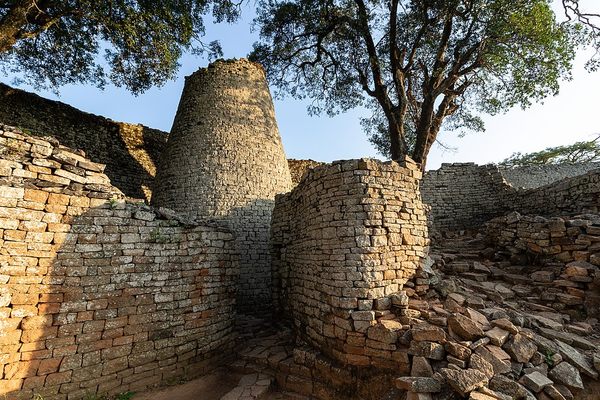Laser Technology Reveals Cambodian Civilization that ‘Rewrites History’
The Khmer empire may have been the world’s largest in the 12th century.

Angkor Wat is the most recognizable ruin in Cambodia, but the CALI project has revealed there’s much more to be found in the jungle. (Photo: Aleksandr Zykov/CC-BY-SA-2.0)
Last year, the Cambodian Archaeological Lidar Initiative (CALI) conducted the world’s most extensive archaeological lidar study, scanning nearly 2,000 square kilometers of Cambodian landscape in search of evidence of the medieval Khmer empire. (Lidar is like radar, only with laser lights.) Now, the results of the campaign are being shared with the public, including groundbreaking discoveries of previously undocumented cities.
The findings are so revolutionary that some archaeologists are claiming the work “rewrites history.”
In an exclusive report from the Guardian, project leader and archaeologist Damian Evans explains the magnitude of the findings:
We have entire cities discovered beneath the forest that no one knew were there – at Preah Khan of Kompong Svay and, it turns out, we uncovered only a part of Mahendraparvata on Phnom Kulen [in the 2012 survey]....this time we got the whole deal and it’s big, the size of Phnom Penh big.
The size of these previously undiscovered settlements implies that the Khmer empire may have been the largest empire on Earth during its 12th-century peak. It’s the first clear evidence that Angkor was densely populated, and opens new avenues of investigation into how the civilization built and sustained its cities.
For example, in a post on the official CALI site, Evans describes how the study has added to and enhanced prior knowledge about the layout of the Sambor Prei Kuk temples:
The lidar data adds a whole new dimension though, showing a quite complex system of moats, waterways and other features that had not been mapped in detail before….The data turns out to be extremely valuable archaeologically, and should add a new dimension to our understanding of the development of this pre-Angkorian capital and how it probably persisted as an important center well into the Angkor era.
Many of the findings contradict long-held assumptions about Angkorian technology and history. The complex water systems discovered through the study appear to have been built hundreds of years before the technology behind them was believed to have existed. Additionally, the lack of southern settlements uncovered by the survey call into question the long-held belief that Angkor collapsed after a Thai invasion forced its occupants to flee to the south.
Other archaeologists specializing in southeast Asia and Angkor have commended the study, telling The Guardian that the findings are “thrilling” and claiming the study “[marks] the greatest advance in the past 50 or even 100 years of our knowledge of Angkorian civilization.”
These landmark discoveries occurred through the application of lidar technology, which uses airborne lasers to gather data on the topography of the landscape. This data is then used to create a 3D model of the area scanned and produce highly detailed maps. Evans and his team were inspired by the 2009 use of lidar to map the Mayan site of Caracol, using funding from National Geographic to conduct a smaller lidar survey of Angkor, Phnom Kulen, and Koh Ker in 2012. The 2012 study revealed the first modern evidence of the city of Mahendraparvata, among other significant discoveries, and enabled the team to secure funding from the European Research Council for the 2015 survey.
In areas such as Cambodia and Belize, where dense vegetation obscures evidence of early civilizations on the ground, lidar technology has had a transformative effect on archaeology, as Evans explained in a 2013 editorial in The Diplomat. “It is true that we might have achieved the same results using traditional ground survey campaigns, which have been underway at Angkor since the nineteenth century. Now, however, decades of machete-work are rendered unnecessary by a few hours of flight time,” he writes.
The official results from the 2015 survey will be published in the Journal of Archaeological Science on Monday, and Evans will also give a talk that evening at the Royal Geographical Society in London. The CALI project will continue its activities, including field verification of the lidar findings, through 2020.
















Follow us on Twitter to get the latest on the world's hidden wonders.
Like us on Facebook to get the latest on the world's hidden wonders.
Follow us on Twitter Like us on Facebook